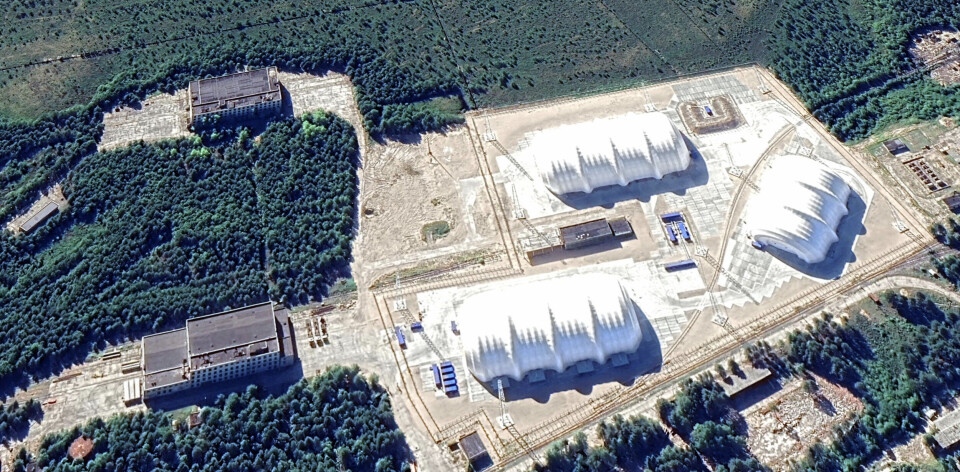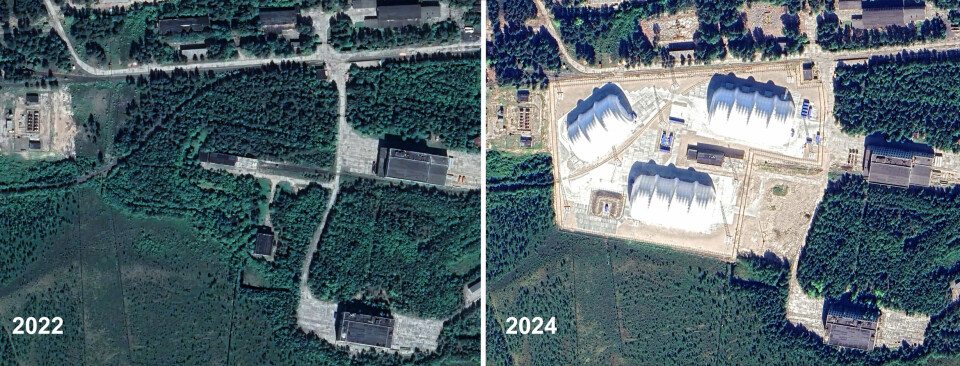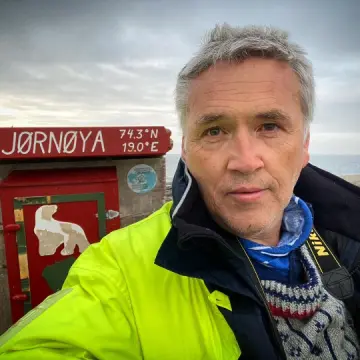
Satellite images reveal massive upgrade at Nenoksa naval missile testing site
Russia has over the last two years built a unique new facility for launching missiles at the infamous Nenoksa test site on the coast of the White Sea.
The Barents Observer has studied satellite images for the years after the 2019-accident when a Burevestnik nuclear-powered missile exploded at sea outside Nenoksa, killing five Rosatom experts exposed to radiation.
In 2023, construction work started inside the strictly controlled military site, located some 60 kilometres west of Arkhangelsk in northern Russia.
For comparison, see the the interactive images in the end of this article, where you can drag between 2022 and 2024.
The new facilities from where missiles will be launched are fenced off and cover 61,000 square meters.
Three big halls, each the size of a football field, are erected in the end of the railway line that brings missiles and gear into Nenoksa. The halls, presumably made of plastic and held up by metal structures, seem to be airtight. A big compressor is attached to each of the halls.
Several blue containers aimed to hold missiles are stored outside of the halls and a dedicated launch pad with two missiles containers can be seen in the centre. Both launchers are directed towards the White Sea, the latest Google Earth images show.
Similar blue launcher containers are previously seen at Nenoksa, but also at other test-facilities for missiles in Russia, like the Kapustin Yar in Astrakhan region and in recent years at Pankovo at Novaya Zemlya in the Arctic. The latter has, like Nenoksa, been used by Rosatom for testing the Burevestnik nuclear-powered cruise missile under development.
Another launch area is located by the shore in the northwest outskirts of Nenoksa test range seems to still be active. It got a new launch pad sometime between 2016 and 2019. A new radar facility was built between 2020 and 2022.
There are no public information available revealing what kind of missile tests will take place at the new constructions that can be seen on the latest satellite images. The area, which before 2023 was forest, is now surrounded by double barbed wire fences. 11 tall masts intended for exact positioning are erected inside the facility.

The Nenoksa naval testing range was established in 1954 and has for the most played a key role in development of both ballistic missiles for submarines built at the Sevmash yard in nearby Severodvinsk, as well as cruise missiles intended for both submarines and surface warships.
The site is served by the attached military settlement of Sopka. In 2015, the Barents Observer reported about a failed test, causing the cruise missile hitting a three-store apartment block housing a kindergarden in its first floor.
The worst accident happened in on August 8, 2019 when an experimental Burevestnik cruise missile exploded during recovering from the seabed outside Nenoksa. A cloud with tiny amount of radioactivity blew east across the city of Severodvinsk. Local detectors recorded a radiation spike to 20 times their normal level for half an hour.
Testing of the Burevestnik missile (named Skyfall by NATO) was then paused, but resumed a few years later at the Pankovo site at Novaya Zemlya in the Arctic as reported by the Barents Observer.
The nuclear-powered cruise missile is one of Vladimir Putin's new weapons for Russia's nuclear deterrence. Powered by a mini-reactor, Putin brags that the missile can have unlimited range. Tests so far, however, has proven that the Burevestnik is still in a development phase with actual deploying yet to be seen.
Head of the Norwegian Intelligence Service, Nils Andreas Stensønes, has previously said the testing program could cause “an accident involving a risk of local radioactive releases."
Other missile systems, additional to the nuclear-powered Burevestnik, that likely is under testing at the new facilities seen on the satellite images include the hypersonic Tsirkon, the Oniks and different versions of Kalibr. Russia is likely also developing new types of long-range cruise missiles that could be tested at the site by the shores of the White Sea.
















